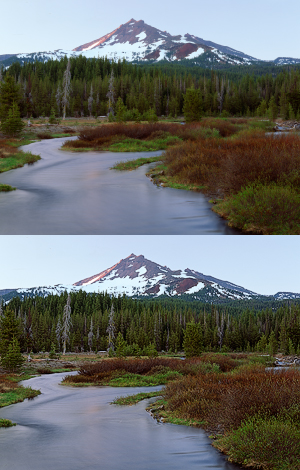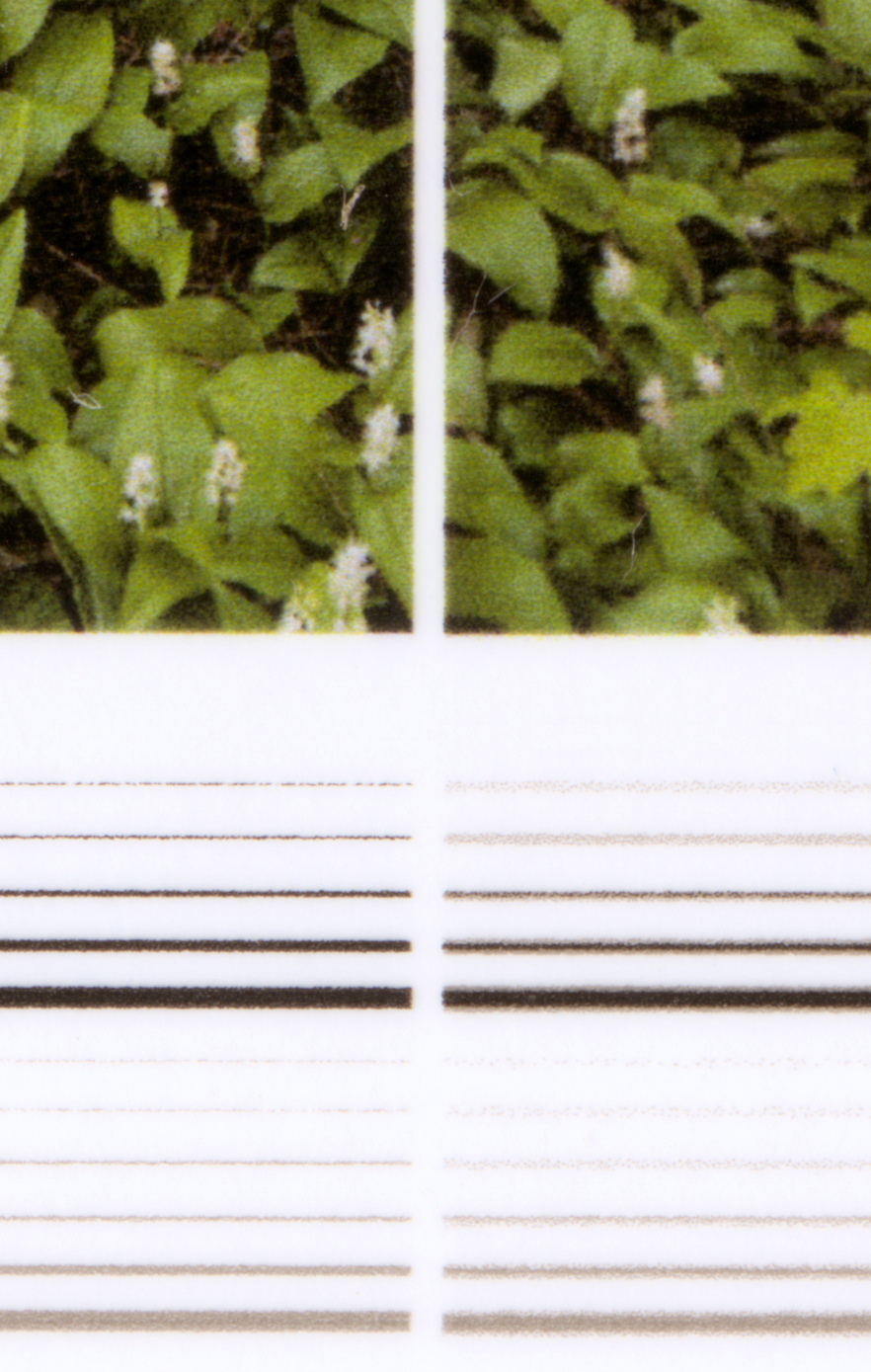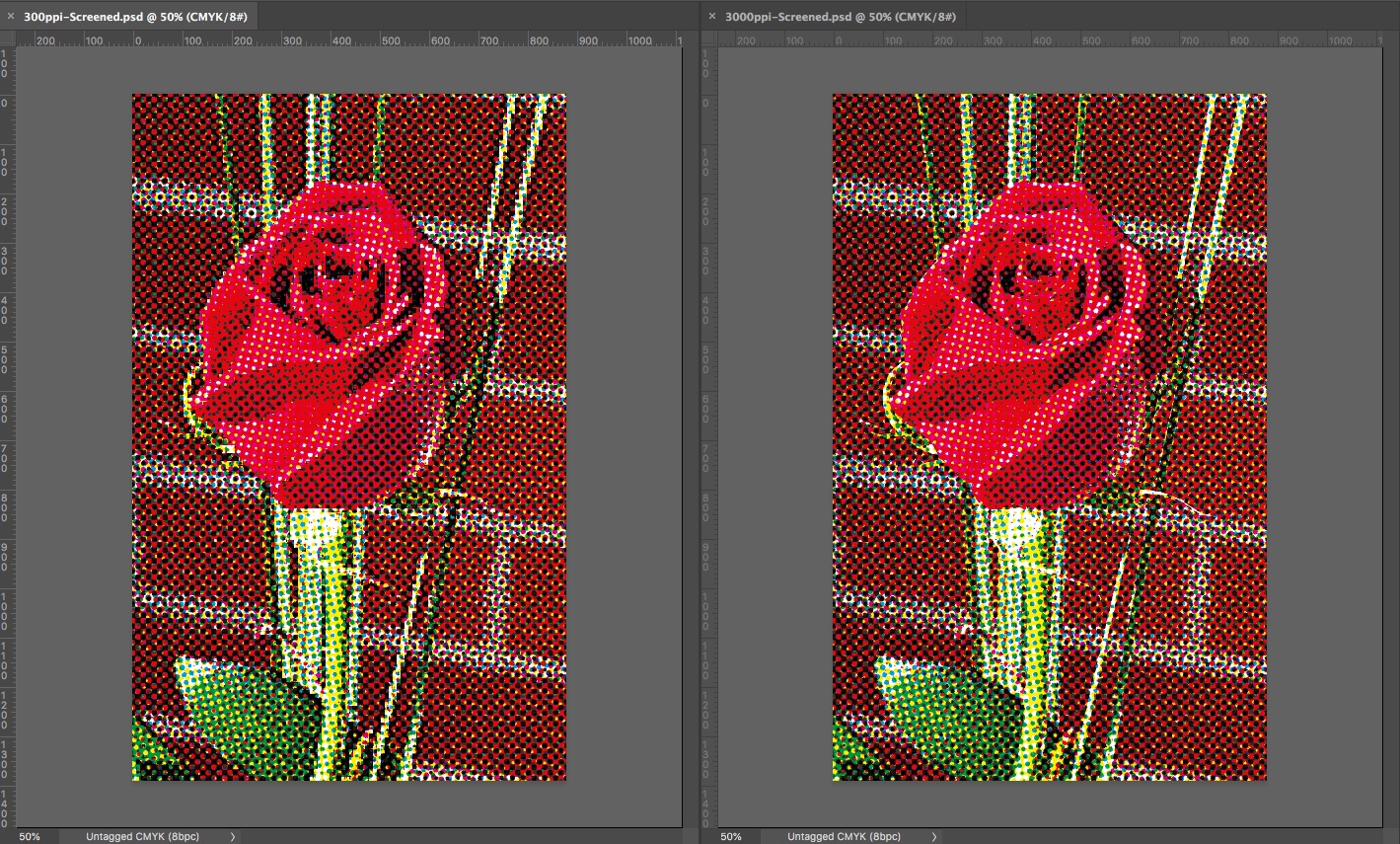- Home
- InDesign
- Discussions
- Re: Is there such thing as «too many ppi»?
- Re: Is there such thing as «too many ppi»?
Copy link to clipboard
Copied
Hi, everyone.
I'm working on a project (Indesign CC) that will be printed in offset.
The one hundred images have been delivered to me by the client (already converted to grey) and I'm not supposed to do anything to them. They will appear in small dimensions (30 x 20 mm). My preflight is telling me that all of the images have too many ppi. The maximum is 1200 (The message the preflight gives me is «Grey images must be at most 1200 ppi.). In fact, some of them have almost 3000 effective ppi. But, the actual ppi is 300.
My problem is: I really don't want to change the images because it is such a difficult client that prefers to do it himself.
On the other hand, I don't want to ask him unless it is not absolutely necessary.
So, my question is: do I really need to be worried about this?
Will this mean that the images will have problems when being printed? Will too many ppi affect the quality of the printing images? Or will the printing house ask me later to reduce the ppi?
Or is it just a warning that can be ignored since the PDF looks perfect?
Thank you so much!
t.a.
 1 Correct answer
1 Correct answer
It means that you have scaled down images to around 10% their original size. So the resolution has gone up to 3000dpi.
The nett result is your computer will take longer to create the PDF because it needs to resample your images.
Ensure that you create a PDF/x file as this is the ISO standard for print.
ID will resample the file to 300dpi for color and grayscale respectively.
Bitmaps will be resampled to 1200dpi.
HTH
Copy link to clipboard
Copied
It means that you have scaled down images to around 10% their original size. So the resolution has gone up to 3000dpi.
The nett result is your computer will take longer to create the PDF because it needs to resample your images.
Ensure that you create a PDF/x file as this is the ISO standard for print.
ID will resample the file to 300dpi for color and grayscale respectively.
Bitmaps will be resampled to 1200dpi.
HTH
Copy link to clipboard
Copied
So, my question is: do I really need to be worried about this?
Will this mean that the images will have problems when being printed?
Or is it just a warning that can be ignored since the PDF looks perfect?
No.
If you export a PDF for the final print, the Export Compression tab lets you control if and how images are sampled down.
Also, if you are delivering a PDF you might want to preflight from AcrobatPro rather than ID, because that’s the document that will be printed.
Copy link to clipboard
Copied
Yes, there is such a thing as having too much resolution. It is not as bad as not having enough resolution. It generally just makes the images look a little bit soft. Resampling will very likely happen somewhere. If it is not done in Photoshop on copies of the originals and if it is not done using the PDF export settings – then it will very likely happen in the service providers RIP, which may or may not do as good a job.
The upper image had an effective ppi of 3000, while the lower had an original/effective ppi of 300, the PDF page was rasterized to 300 ppi for evaluation with no further post-processing. The lower image with the lower "correct" resolution has more detail:

You can also take a look here for a recent discussion on the same topic:
Re: Do I need to resize images before importing them in Adobe InDesign?
Copy link to clipboard
Copied
It generally just makes the images look a little bit soft. Resampling will very likely happen somewhere, if not done in Photoshop on copies and if not done using the PDF export settings, then it will likely happen in the service providers RIP, which may or may not do as good a job as elsewhere.
Hi Stephen, it is true that a RIP might downsample—I’ve seen it go both ways. If I have something like colored line art that would benefit from more than 300ppi, I will try to communicate with the printer not to downsample. If it does happen the effect is subtle in print—easier to see on screen. In today‘s market most of my clients would not be wiling to pay for the labor of manually resampling each image and applying some kind of USM, but if the full resolution makes it through the RIP, there would be no loss in quality—I have a software RIP that does not downsample.
It seems like Teresa is exporting a PDF so the down sampling has likely already happened.
Copy link to clipboard
Copied
I think you have to consider the resampling that is happening to fit the comparison images on screen—the real test would be halftone screen output from a RIP that is not downsampling.
The preview of the 3000ppi image has to get downsampled in order to fit it on the screen for the 10% view, and that‘s not necessarily an accurate preview of the output. In this comparison of 3000ppi (top) vs. 300ppi, the 3000ppi version is displayed at 10% vs. the 100% 1:1 view for the 300ppi version:

The 100% 1:1 actual view for the 3000ppi version vs. the 10X view for the 300ppi version.

Copy link to clipboard
Copied
I think you have to consider the resampling that is happening to fit the comparison images on screen—the real test would be halftone screen output from a RIP that is not downsampling.
Rob I agree that the final AM/FM screening for a real world test is better than pixel peeping and would take it a step further to ink on paper. That being said, I believe that a "correctly" prepared file will deliver better results than an "incorrectly" prepared file.
Even if the image is not being resampled and all of this data makes it through to the screening algorithm intact, I think it is a gamble to provide excessive reduction and crazy high resolution as being discussed here with 3000 ppi effective resolution.
Copy link to clipboard
Copied
In practice I've never seen a quality problem when the RIP outputs all of the data—it doesn’t happen with my software RIP. If quality does somehow degrade with higher resolutions, where is that threshold? If 3000ppi is a problem, would 1000ppi also be a problem? 600ppi? In the context of the OP’s question, would it really be worth the effort to down sample, sharpen, and replace 100+ images, vs. doing on export?
Copy link to clipboard
Copied
In practice I've never seen a quality problem when the RIP outputs all of the data—it doesn’t happen with my software RIP. If quality does somehow degrade with higher resolutions, where is that threshold? If 3000ppi is a problem, would 1000ppi also be a problem? 600ppi?
Good questions, I am not aware of any definitive published studies.
My gut feeling would be if the standard offset "rule of thumb" for 1.5-2 times the linescreen, then 2.5-3 times the linescreen could be considered "too much".
There is obviously a reason that PDF and DFE/RIP software has a threshold setting to resample when there is too much resolution in the file, however that may be more about processing speed/bottlenecks than quality.
In the context of the OP’s question, would it really be worth the effort to down sample, sharpen, and replace 100+ images, vs. doing on export?
This can be scripted and does not take too much time, there are multiple scripts available to do all of this (I used to do so on a packaged copy of the original files before handing off native files).
However as I have said multiple times in these forums, including recently in the topic thread referenced above and below, PitStop Pro can sharpen every image in the PDF file to account for the softening introduced by resampling and also for the softening introduced by screening/printing. There is a good reason why USM was used in both analog and digital workflows of years gone by, and it still has a place in today's workflows.
Re: Do I need to resize images before importing them in Adobe InDesign?
Copy link to clipboard
Copied
My gut feeling would be if the standard offset "rule of thumb" for 1.5-2 times the linescreen, then 2.5-3 times the linescreen could be considered "too much".
It‘s easy enough to test on a RIP that doesn’t down sample.
Here's a scan of a print with the same image split. On the left the res is 2400ppi, on the right the same image sampled down to 300ppi. The screening is stochastic, and the output print resolution is 2880 x 1440dpi. From a normal viewing distance it is difficult to discern any difference, which is to be expected.

But, under a loupe or zoomed in I can see a difference, and the 2400ppi version on the left is clearly better when the details are fine and in high contrast.
Obviously it’s not worth slowing the output down for a quality difference that needs magnification to be seen, but there‘s no drop off at the higher resolution:


Copy link to clipboard
Copied
Thanks Rob, that is interesting from an inkjet viewpoint and I can do some similar tests myself. My comments were with regards to offset halftone AM screening from RIPed and separated to plate and printed.
I don't have easy access to traditional plate RIP and halftone output anymore. It would also be interesting to compare a digital halftone such as from an Indigo.
For inkjet such as yours, I would be using either 360 or 240 ppi (which evenly divide into the 1440 or 2880 resolution), however I doubt that 300 ppi is throwing things off that much.
Copy link to clipboard
Copied
I’ve always made a habit of press proofing targets when I’m using a new printer for important projects—with online printers those tests are inexpensive. I include resolution and line tests to check if the RIP is down sampling, and have never seen a problem at higher resolutions with either stochastic or halftone screens when there’s no down sample.
I’ve also never seen any evidence that something magical happens at a 2 to 1 pixel to halftone ratio. 300ppi is a useful rule-of-thumb to establish a threshold—but it is a magic number. The content of the image determines how much resolution is needed. It would be possible to have a 4-color image with no halftone at the detail edges—some kind of line art with color. In my example the fine tree branches are improved at the higher resolution because of their detail against the high contrast background.
Copy link to clipboard
Copied
Here is a simulated comparison using a 300 vs. 3000 ppi input image, converted to a 2400 ppi 150 lpi halftone. Yes, there are USM halos on the left hand 300 ppi image, where as the sharpening on the 3000 ppi has been lost as it is not optimised for the specific output. I would expect the 300 ppi image to output slightly sharper due to being "correctly" prepared for halftone output at the intended size.
The halftone screen is a great equalizer of input quality which is what I have been saying all along. AM and FM screening are of course different. Of course, the proof is in the final printing.
Photoshop is not a good halftone RIP simulator, but it is the best that I have at hand.
Both the 300 and 3000 ppi image were opened into Photoshop at the same physical print size retaining their respective input resolutions, converted to CMYK, channels split, converted to bitmap mode 2400 ppi using a 150 lpi halftone (round dot, conventional angles), converted to grayscale 1:1, channels merged. The 300 ppi image started off with a resolution of 110 x 174 px and the 3000 ppi image had a resolution of 1100 x 1740 px. Both halftone versions had a resolution of 880 x 1392 px.

Copy link to clipboard
Copied
Hi together,
in the sense of the headline of this thread::
Is there such thing as «too many ppi»?
my answer would be: no
But. It could happen that a one bit image with very high effective ppi has details, very thin lines perhaps, only one or a couple of pixels thin, that could not be reproduced well or at all when a plate is made for e.g. offset printing.
Example: Construction plans for architecture scanned 1:1 at high resolution with fine lines, later scaled in the layout to effective ppi more than e.g. 10,000 ppi ( this value is just an example ). Usually a plate for printing is done with e.g. 2540 dots per inch. If a thin line of the raster data results in a dot range of 1 to perhaps 10 dots ( ? ) width it could become problematic to see such a line reproduced on paper. This of course depends on the printing paper and other factors like the condition the rubber blanket of the printing press is in.
FWIW: The same basically goes with vector graphics that are scaled down tremendously with thin lines, but for that the process for doing the raster work for imaging the plates can artifically make them thicker. Don't know if current RIP technology can do that with pixel images.
Also see this:
Minimum line width for a print project
Regards,
Uwe
Find more inspiration, events, and resources on the new Adobe Community
Explore Now
